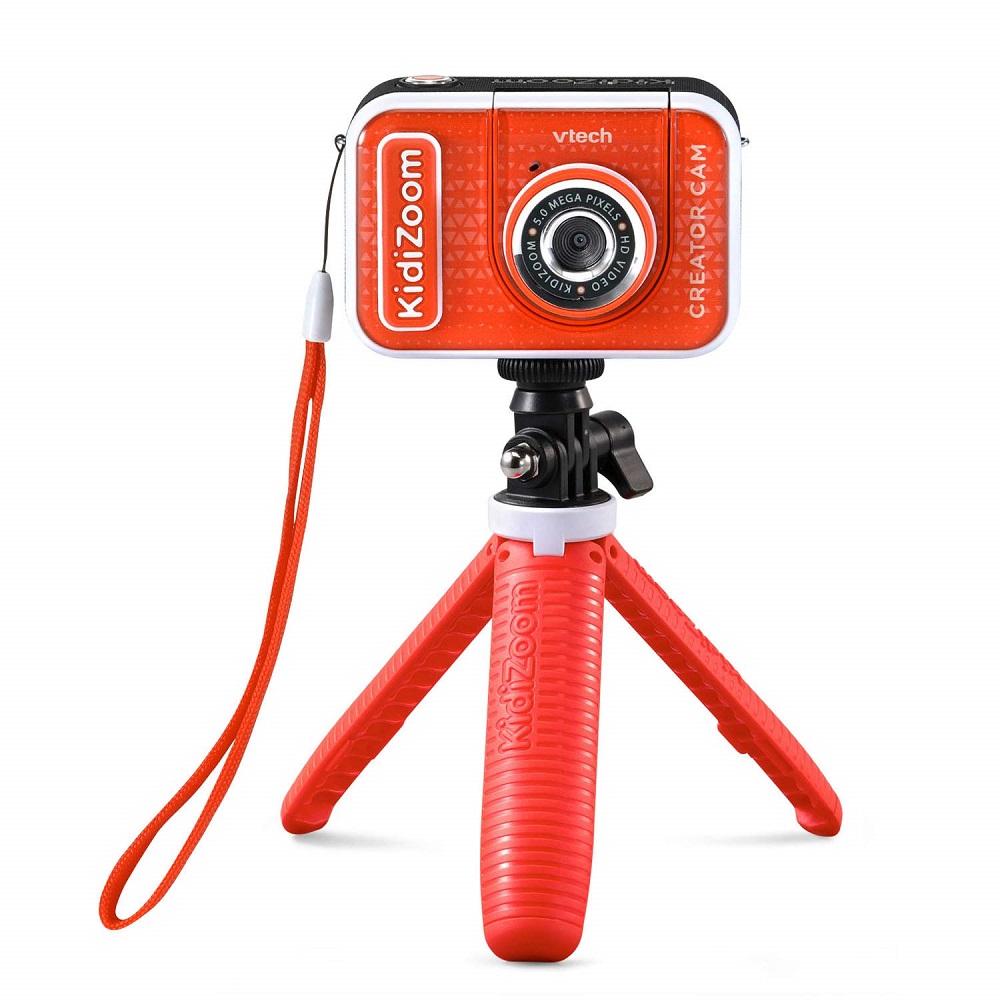VTech cameras are designed for children and budding photographers, offering fun features and user-friendly designs. They encourage creativity and exploration while providing an excellent platform for learning the fundamentals of photography. Whether you’re a parent guiding your child or a young photographer eager to capture the world around you, this article covers essential tips for taking great photos with your VTech camera. With these guidelines, you can enhance the quality of your images and have a fun experience doing it!
Understand Your Camera’s Features
Familiarize Yourself with Settings
Before you start taking photos, spend some time familiarizing yourself with your VTech camera’s features. VTech models come packed with various settings, including different shooting modes, filters, and scene selections. By understanding these options, you can choose the right settings for different situations, enabling you to capture the best possible images.
For instance, some cameras may have specific modes designed for portraits, landscapes, or low-light environments. Knowing how and when to utilize these modes can dramatically improve your photo quality. Take a few moments to experiment with each mode, and see how your camera responds. This knowledge will be a valuable resource when you’re ready to shoot.
Explore Built-in Effects
Many VTech camera come with built-in effects and frames that can enhance your photos. Using these fun features can add some creative flair to your shots, making your photographs more exciting and unique. Experiment with different filters to see which ones resonate with your style.
However, avoid overusing these effects, as they can sometimes distract from the main subject. Instead, look to use them sparingly. Striking a balance allows you to enjoy the playful aspects of your VTech camera while ensuring the focus remains on the subject.

Pay Attention to Composition
Rule of Thirds
Good composition is a cornerstone of quality photography. One of the most well-known techniques is the “rule of thirds.” Imagine your frame divided into nine equal parts by two horizontal lines and two vertical lines. The rule suggests placing your subject along these lines or at their intersections to create a more balanced and captivating photo.
When framing a shot, take a moment to reposition yourself or the subject to follow this guideline. This simple adjustment can lead to more dynamic images that draw the viewer’s eye. By applying the rule of thirds, you can elevate the quality of your photography dramatically.
Frame Your Subject
Don’t overlook the environment around your subject. Natural frames, such as trees, doorways, or other objects, can help accentuate your subject and add depth to the photograph. Use foreground elements to create layers in the image, giving a three-dimensional feel and enriching the visual experience.
Additionally, space around the subject gives it room to breathe. Avoid cluttering the frame with too many elements. Instead, focus on simplicity; clarity often results in a more powerful photo. A clean composition can allow your subject to shine and maintain viewer engagement.
Lighting Matters
Shoot in Natural Light
Lighting plays a crucial role in photography. Whenever possible, try to take advantage of natural light. Early mornings and late afternoons are ideal for capturing soft, golden hues that can elevate any image. The lighting during these times, often referred to as “golden hour,” creates a warm glow and reduces harsh shadows.
If you’re shooting indoors, position your subject near windows to utilize available daylight. Experiment with different angles to see how light interacts with your subject. Avoid using flash unless absolutely necessary, as direct flash can lead to overexposed images and unnatural shadows.
Be Mindful of Shadows
While natural light is favorable, be cautious about casting harsh shadows across your subject. Pay attention to the time of day, as shifting sunlight can create shadows that detract from your images. Adjust your angle or find alternative positions to eliminate unflattering shadows, ensuring your subject is well-lit.
When photographing with a potential shadowed background, you might want to reposition your subject or even choose a different time of day. Little adjustments like these can make a world of difference in the overall quality of your photos.

Explore Different Angles
Change Your Perspective
One simple way to add creativity to your photos is by exploring different angles and perspectives. Instead of always shooting at eye level, try crouching down or standing on an elevated surface to capture your subject from unique viewpoints. These changes can give your images a fresh, dynamic feel that sets them apart from typical shots.
Consider shooting from above, below, or to the side of your subject. By varying your angles, you’ll discover new compositions that capture the essence of what you’re photographing. Encourage your young photographer to experiment with multiple angles, as this practice fosters creative thinking and an adventurous spirit.
Close-Ups and Details
Don’t forget to capture details! Close-ups of objects can reveal textures and intricate designs often overlooked in wider shots. Whether it’s a flower, a toy, or a favorite dessert, zooming in on these elements can create compelling images that highlight the beauty in small things.
Encourage your child to look for interesting textures, colors, and shapes. Close-up shots can provide powerful storytelling opportunities and showcase the uniqueness of everyday items, turning ordinary subjects into extraordinary images.
Master the Art of Focus
Achieving Sharp Focus
A sharp focus enhances image quality, drawing attention to your subject. VTech cameras have an autofocus feature designed to help with this. However, in situations with fast movement or low light, this feature may struggle. To ensure your subject remains sharp, take a moment to halfway press the shutter button until the camera locks in the focus, then fully press down to capture the shot.
You can also control focus by choosing where to aim the camera. If your camera allows, you can tap the screen or select a focus point in the viewfinder. This practice will ensure that your most important elements are captured crisply.
Experiment with Depth of Field
While many VTech camera might not have extensive depth-of-field settings, it’s still beneficial to understand the concept. Depth of field refers to how much of the picture is in focus. A shallow depth of field can isolate your subject and create a pleasing blur in the background, drawing attention to the main focus.
To mimic this effect on your camera, try moving closer to your subject while keeping the background further away. Even with basic cameras, small adjustments can lead to lovely compositions that make your photos stand out and feel more professional.

Use Proper Framing and Backgrounds
Consider Your Background
The background plays an essential role in your photographs. A cluttered or distracting backdrop can take attention away from your subject. Before you click the shutter, take a moment to assess the surroundings. Look for clean and simple backgrounds that complement rather than compete with your subject.
In some cases, you might find that moving just a few steps can dramatically change the background and enhance the image quality. Pay special attention to colors; a contrasting background can make your subject pop, providing a more visually engaging photo.
Frame Within a Frame
Using framing techniques can add depth and interest to your shots. Natural frames, like doorways or branches, can draw the viewer’s eye toward the subject while adding context. When you strategically position your camera, you can create a captivating visual journey within the frame.
Encourage creativity by allowing your child to explore different ways of incorporating these framing techniques into their shots. Simple explorations can yield remarkable results, making photography more engaging and stimulating.
Review and Edit Your Photos
Take Time to Review
After each photo session, take a moment to review the images you’ve captured. This practice allows you to assess what worked well and what could be improved for future shoots. While you may be excited about a particular shot, being critical helps develop a more discerning eye, which is essential for growth.
Analyze factors such as lighting, composition, focus, and exposure. Use this evaluation to highlight strengths and weaknesses as you prepare for the next opportunity to shoot. Practicing this habit will improve your photography skills over time, enhancing your overall results.
Editing for Enhancement
Editing can be a powerful tool to enhance your photographs further. Basic software programs or mobile applications offer editing functionalities like cropping, adjusting brightness, and applying filters. Encourage your child to explore these tools to make their images even better.
While you can edit to correct minor issues, be careful not to overdo it. Aim for subtle enhancements that maintain the natural look of the photograph. The goal is to retain the authenticity of the image while improving its overall visual appeal.
Capture the World Creatively
With these tips, taking great photos with a VTech camera becomes an exciting and rewarding activity. By understanding your camera’s features, honing your composition skills, mastering focus, and practicing thoughtful editing, you can capture stunning images that reflect your creativity and vision.
Encouraging young photographers to explore their surroundings and express their artistic ideas fosters a love for imagery that can last a lifetime. Remember that photography is about capturing moments and telling stories. Enjoy the process, experiment, and have fun creating lasting memories through your lens!
